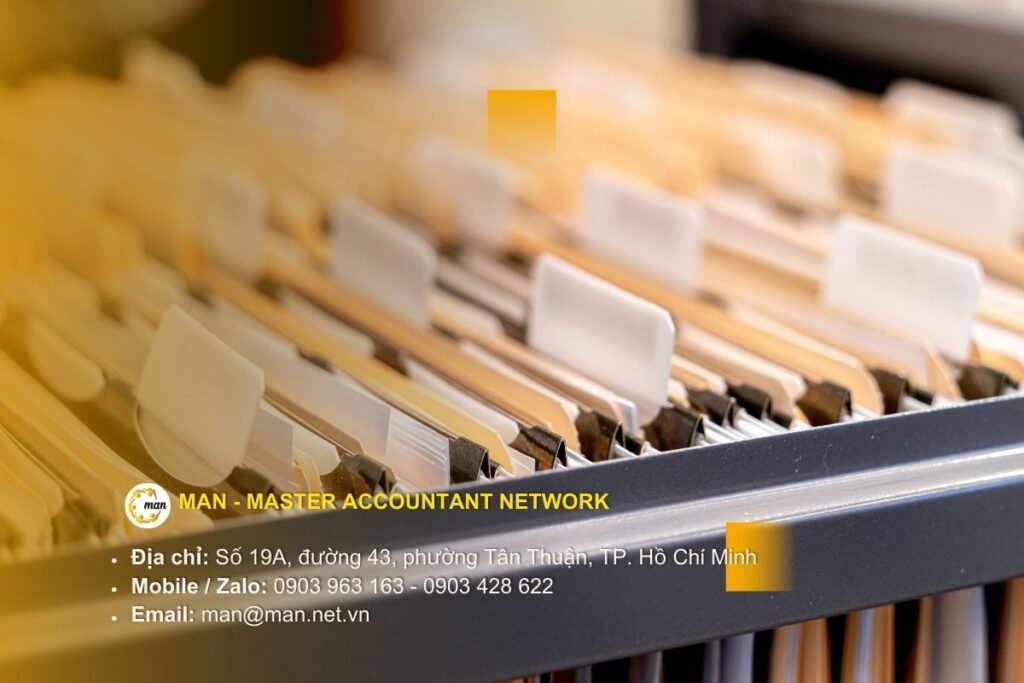Country-by-Country reporting is an important tool for multinational corporations to be transparent in tax management and related-party transactions. This report demonstrates market prices and ensures compliance with Vietnamese tax laws on transfer pricing, while supporting transfer pricing risk control according to the arm's length principle. According to General Department of Taxation In 2023, about 35% multinational enterprises in Vietnam will be subject to tax arrears due to incomplete profit reporting. To understand in more detail, the article will analyze the content, requirements and how to optimize cross-country profit reporting, combining local file, master file and IGF.
Concept and role of cross-country profit reporting
What is Country-by-Country Reporting?
Country-by-Country Reporting (CbCR) is a report prepared by multinational corporations according to OECD guidelines, to provide aggregate information on revenue, profit, taxes paid, and key economic indicators for each country in which the corporation operates. This report differs from Master File, Local File, or IGF in that it focuses on overall profits and taxes by country, rather than details of individual transactions or corporate structures.
The role of cross-border profit reporting is very important in the group's transfer pricing strategy, helping to:
Support transfer pricing risk management on a global scale.
Enhance tax transparency and compliance with international standards.
Is a tool to support tax authorities in evaluating the business activities of multinational corporations.
Role in multinational corporations
Country-by-country reporting also plays a key role in multinational corporations, especially those with cross-border inter-company transactions. Through this reporting, corporations can:
Demonstrate that transactions between the parent company and its subsidiaries are made at fair market prices.
Comply with Vietnamese tax laws on transfer pricing and OECD standards.
Support internal management and strategic decision making on profit allocation and tax risk across countries.
Example: A multinational corporation prepares cross-country profit reports based on data from its subsidiaries in Vietnam, Singapore, and Japan. The reports summarize revenue, pre-tax profits, and taxes paid, thereby demonstrating that the market prices applied to intercompany transactions are reasonable and in compliance with the law.
Next, we will delve into the mandatory content and elements required in cross-country profit reporting to comply with OECD standards and Vietnamese tax law.
Mandatory content in cross-country profit reporting

Corporate information and transfer pricing strategy
Country-by-country reporting begins with basic information about the group and its transfer pricing strategy. Required elements include:
Corporate structure, ownership structure, international branches.
Corporate transfer pricing strategy and pricing policies applied throughout the system.
An example illustrates hypothetical figures: Global revenue of $1 billion, pre-tax profit of $120 million, helping tax authorities and corporations assess the reasonableness of profit allocation.
Cross-border affiliate trading
Next, the report needs to list all cross-border related transactions, from the purchase and sale of goods, provision of services to asset transfers between subsidiaries and parent companies within the group.
The valuation method applies the arm's length principle to ensure that transactions are priced at an equivalent price to the independent market.
Example: A subsidiary in Vietnam provides services to its parent company in Singapore at a market value of USD 500,000/year. This report helps demonstrate transparency and reduces the risk of tax arrears.
Market price summary and proof report
Cross-border profit reporting must also aggregate data from Local File and IGF to support the market price for each transaction.
Example of a summary table:
| Nation | Subsidiary | Transaction type | Value (USD) | Valuation method | Allocated profit |
|---|---|---|---|---|---|
| Vietnam | Company A | Management services | 500.000 | Independent comparison prices | 60.000 |
| Singapore | Company B | Supply of raw materials | 2.000.000 | Cost plus interest | 150.000 |
This table helps businesses and tax authorities easily check the reasonableness of profit allocation, while ensuring compliance with Vietnamese tax laws on transfer pricing and OECD standards. After understanding the mandatory content, we will delve into the relationship between cross-country profit reporting with Master File, Local File and IGF to optimize tax management and transfer pricing risks.
Relationship between Master File, Local File and IGF

In the tax management and related party transactions of multinational corporations, Master File, Local File and IGF play complementary roles. Understanding the differences and connections between these types of records helps businesses manage transfer pricing risks, demonstrate market prices, and ensure compliance with Vietnamese tax laws and OECD standards.
Master File: Consolidates corporate-level information, structure, business strategy, and transfer pricing policies.
Local File: Details of related party transactions in each country, valuation methods and transfer pricing reports.
IGF (Intercompany Global File): Synthesizes cross-border transactions within the group, supporting global risk management.
Comparison Table: Compare Master File, Local File and IGF
Before going into the details of cross-border profit reporting, it is important to understand the relationship and role of the types of records in multinational corporations. Master File, Local File and IGF do not exist independently but are closely linked together, supporting transfer pricing risk management, transaction transparency and demonstrating market prices according to Vietnamese tax law and OECD standards.
| Criteria | Local File | Master File | IGF |
|---|---|---|---|
| Scope | Affiliate transactions in the country | The entire group | Cross-border transactions within the group |
| Content | Related party information, transaction details, valuation methods, transfer pricing reports | Corporate structure, business strategy, transfer pricing strategy, corporate policy | Transaction overview, scope and value, not transaction details |
| Purpose | Comply with Vietnamese tax laws | Support for Local File context and data | Global transfer pricing risk management |
| For example | Subsidiary establishes Local File in Vietnam | Master File summarizes information of multinational corporations | IGF aggregates transactions between parent companies and international subsidiaries |
Note: Country-by-Country profit reporting often references data from both the Master File, Local File and IGF, helping multinational corporations optimize profit allocation and manage transfer pricing risks effectively.
Legal regulations and international standards
Vietnam Tax Law on Transfer Pricing
Country-by-country reporting is a mandatory requirement to ensure that related-party transactions between companies in a multinational corporation comply with the arm's length principle. A complete report helps the Vietnamese tax authority accurately assess profits and reduce the risk of being overpaid.
Illustrative example: According to data from the General Department of Taxation in 2023, about 40% FDI companies inspected in Vietnam had to adjust their profits due to missing documents or incomplete reports. This emphasizes the importance of complying with Vietnamese tax laws and preparing documents carefully.
OECD rules on cross-border profits
OECD guides multinational enterprises to establish Master File, Local File and IGF to make profits and international intercompany transactions transparent. The arm's length principle is applied globally, helping enterprises standardize valuation methods and reduce transfer pricing risks.
Compliance with OECD guidelines not only meets international legal requirements but also helps businesses build transparent, auditable cross-country profit reporting systems.
Comparison table of Vietnamese and OECD laws
To easily visualize the differences between Vietnamese tax law and OECD standards, as well as the role of different types of records in cross-border profit management, you can refer to the comparison table below. This table summarizes the main criteria, scope of application, valuation principles and purposes of use, helping businesses clearly understand legal requirements and international standards.
| Criteria | Vietnam Tax Law | OECD Guidelines |
|---|---|---|
| Request Profile | Local File | Master File, Local File, IGF |
| Scope of application | Affiliated transactions in Vietnam | Multinational enterprises, international intercompany transactions |
| Pricing principles | Arm's length principle | Arm's length principle |
| Purpose | Demonstrate market value, comply with the law | Support global risk management, transparent inter-company transactions |
Risks and notes when preparing cross-border profit reports
Transfer pricing risk
When preparing cross-border profit reports, businesses are susceptible to some common transfer pricing risks:
Lack of information on corporate structure and subsidiaries.
Transaction details are incomplete or incorrect.
The valuation method does not comply with the arm's length principle.
Illustrative example: A Master File missing information about a subsidiary in Singapore resulted in a US$1 million profit recovery, posing legal and financial risks to the group.
Optimizing cross-border profit profiles
To effectively manage transfer pricing risks, businesses should take the following steps:
Create a standard Master File, combining data from Local File and IGF.
Control the quality of records, update regularly when there are changes in transactions or legal regulations.
Ensure that the profit allocation method complies with the arm's length principle.
For example: A multinational corporation establishes a complete Master File + Local File + IGF, demonstrating the method of profit allocation in accordance with the arm's length principle, helping to reduce the risk of tax collection and increase transparency in inter-company transaction management.
Conclude
Country-by-country reporting plays a key role in the management of multinational corporations, helping to clarify related-party transactions, demonstrate market prices and reduce transfer pricing risks. The preparation of a complete report, combining Master File, Local File and IGF, ensures compliance with Vietnamese tax laws on transfer pricing and OECD standards.
To optimize records and minimize the risk of tax collection, businesses should build cross-country profit reports according to OECD standards, and update them regularly when transactions or legal regulations change.
Contact MAN – Master Accountant Network for advice:
Address: No. 19A, Street 43, Tan Thuan Ward, Ho Chi Minh City
Hotline / Zalo: 0903963163
E-mail: man@man.net.vn
MAN Editorial Board – Master Accountant Network




